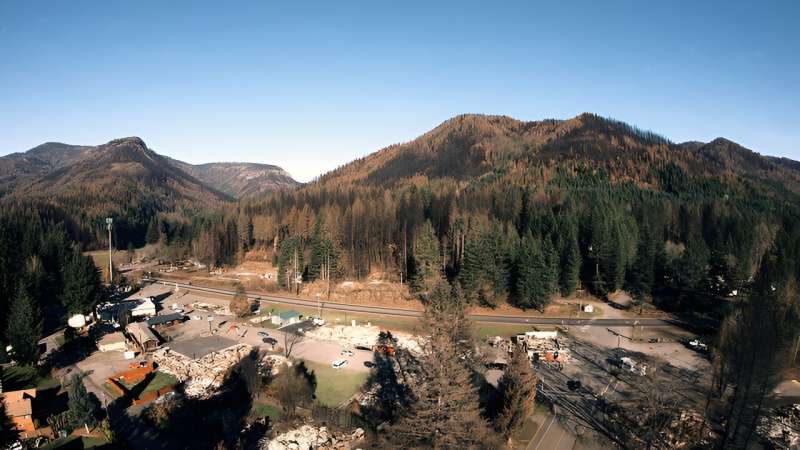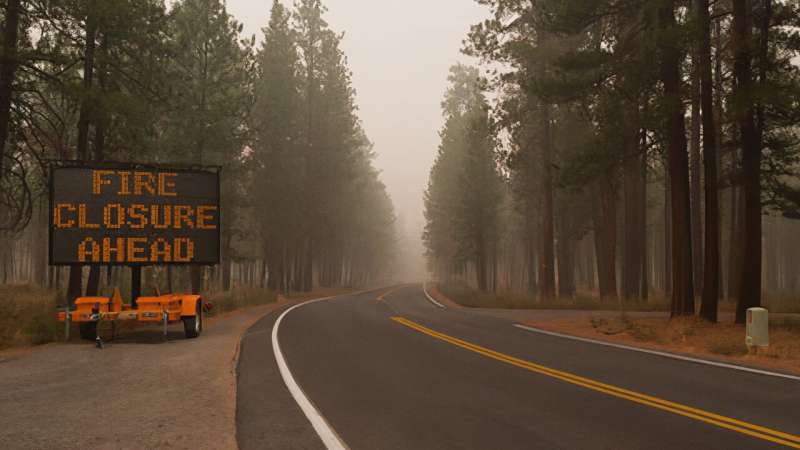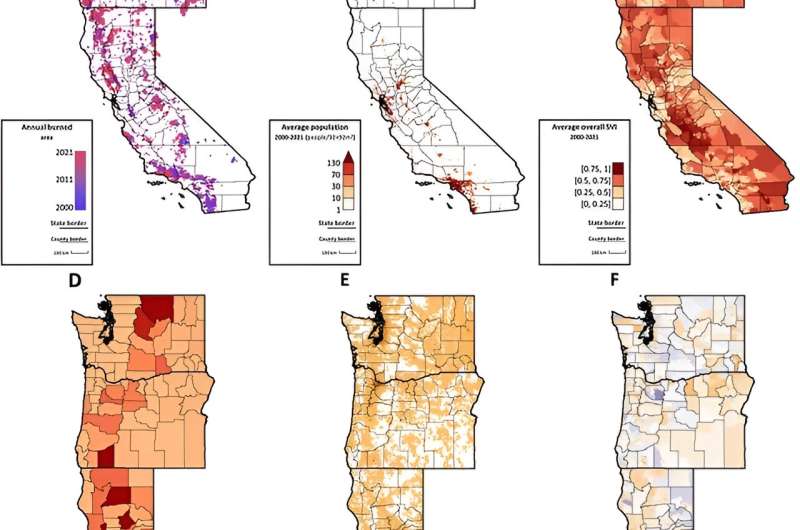This article has been reviewed according to Science X's editorial process and policies. Editors have highlighted the following attributes while ensuring the content's credibility:
fact-checked
peer-reviewed publication
trusted source
proofread
Socially vulnerable populations are disproportionately exposed to wildfires in the West, study finds

People experiencing a high degree of social vulnerability are also more exposed to wildfires in Oregon and Washington as wildfire risk increases, a new study shows.
Social vulnerability is a characteristic of a person or community—such as age, race or ethnicity, or socioeconomic status—that affects their susceptibility to harm from a hazard.
From 2011 through 2021, the number of people with high social vulnerability who were exposed to wildfire in Oregon, Washington and California more than tripled compared to the previous decade. This compounding of physical and social risks underscores the necessity of incorporating the needs of at-risk populations into wildfire preparation and response planning, said Erica Fleishman, a professor at Oregon State University and a co-author of the paper.
"There has been general knowledge that the number of destructive wildfires and total impacted population are increasing and that hazards have inequitable effects on people," said Fleishman, who is affiliated with OSU's College of Earth, Ocean, and Atmospheric Sciences, and also directs the Oregon Climate Change Research Institute. "This research is helping us understand how much more risk people are facing, where and why.
"The risks are clearly higher for the people who are going to have more difficulty recovering."

The findings were published today in the journal Science Advances. The study was led by Arash Modaresi Rad, a doctoral student at Boise State University, and his advisor, Mojtaba Sadegh, an associate professor of civil engineering.
From 2000 through 2021, nearly half a million people were exposed—they resided within the perimeter of a wildfire—in Oregon, Washington and California. An overwhelming majority were in California, with less than 5% in either Oregon or Washington.
To better understand the connections between wildfire risk and social vulnerability, the researchers used data from satellite imagery, the U.S. Census and population maps to analyze changes in the number of people exposed to wildfires and their social vulnerability from 2000 through 2021.
The Centers for Disease Control and Prevention's Social Vulnerability Index uses information on socioeconomic status, household composition, minority status, housing and transportation to measure communities' ability to prepare for, respond to and recover from hazardous events. Each component of the index is derived from census data, and scores are available for each census tract and county in the United States.
Together, the data sources showed that fire risks increased for all, but the risks to people experiencing high social vulnerability were disproportionately higher. The cause of that inequity varied among the three states.

In California, about 8% of people exposed to wildfire experienced high vulnerability, compared to 45% in Oregon and 44% in Washington.
The proportion of exposed Californians who were experiencing high vulnerability was small, but still translates to nearly 37,000 people. Nearly 19,000 total were exposed in Oregon and Washington.
In California, the majority of the people exposed to wildfire were living in urban areas, whereas those exposed in Oregon and Washington largely were rural residents.
"These data show that there is no single strategy for wildfire preparation and response," Fleishman said. "Instead, they indicate responses might be honed to reflect the needs of individual communities with different risk factors."
In some areas, that may mean paying particular attention to residents who are older or mobility limited, and in other areas, it might mean adapting materials to ensure they can reach non-English speaking communities, the researchers suggested.
"The underlying factors, such as business decisions, that exacerbate climate change and increase wildfire risk also decrease the resilience of at-risk communities," Sadegh said. "A more just and equitable economy can mitigate the compounded effects of physical and social vulnerabilities."
More information: Arash Modaresi Rad et al, Social vulnerability of the people exposed to wildfires in U.S. West Coast states, Science Advances (2023). DOI: 10.1126/sciadv.adh4615. www.science.org/doi/10.1126/sciadv.adh4615
Journal information: Science Advances
Provided by Oregon State University




















